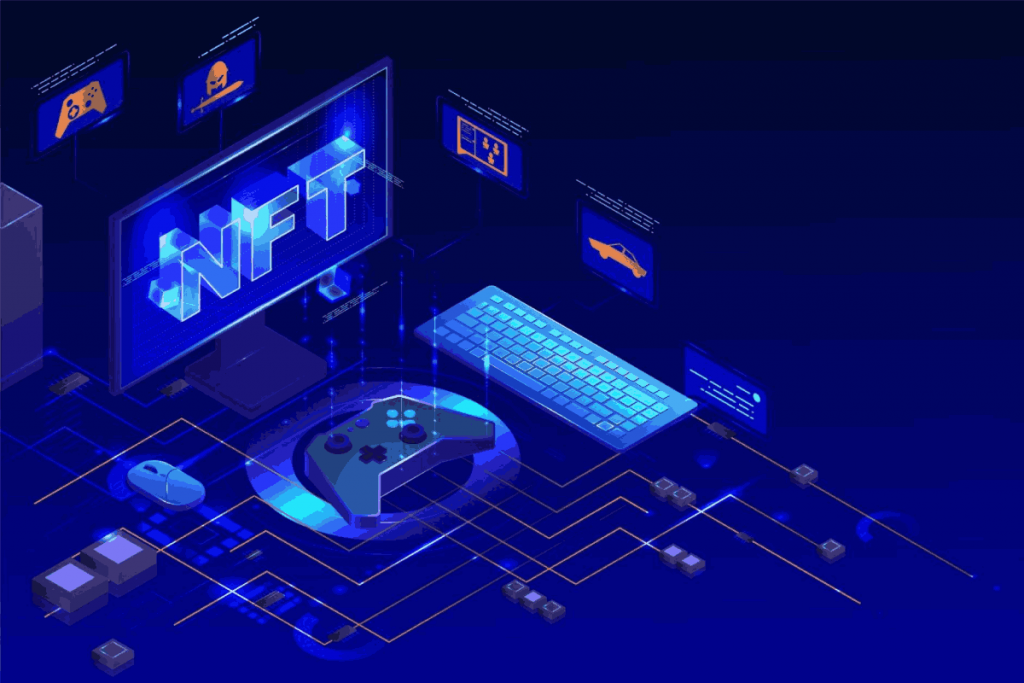NFTs in Video Games – In 2022, the non-fungible token has become a major stake for many people in the video game industry, so let’s explain the ins and outs of this new trend.
Table of Contents
What are NFTs?
An NFT, for non-fungible token, is a “digital file to which a digital certificate has been attached”. The purpose of an NFT is to give a unique feature to a computer file. The essential information of the file (author, creation date, owner, etc.) is thus stored in this certificate, which is updated at each change by a blockchain.
NFT and video games: a way to make money while playing?
The whole point of NFT in video games lies in P2E, for play-to-earn. Behind this clever idiom, which refers to another famous industry acronym – F2P for free-to-play – is the idea that players can get a financial return for their hours spent playing, which can be free spins on the best online casino, special weapons in hack and slash, getting bonuses or VIP privileges in many types of games, etc.
It is quite common in today’s game productions to unlock items over the course of hours of play and achievements: characters, weapons, equipment and other cosmetics, stamped with an NFT certificate, which become valuable items that players buy and sell according to their desires or financial needs, but above all according to the holy law of supply and demand.
Items gain or lose value, depending on their level of scarcity or the demand of players. Players can make a profit on the most popular games, or “lose everything” in a few hours if the community suddenly loses interest in the game in question.
How does it work?
Video games can incorporate digital certificates in different ways. NFTs are sometimes at the heart of the project: in some titles, it is necessary to buy your characters in order to start playing. The costs vary greatly depending on the interest of the players, the rarity of the characters and the modifications made by the studio in charge of the development.
In more traditional games, it is often the cosmetic items (equipment, weapon skins) that have a digital certificate attached to them to make them unique. They can be found randomly as you progress through the game, picked up in lootboxes for a micro-transaction, or purchased directly on the dedicated platform set up by the publisher, who receives a commission on each transaction.
For other players, finally, NFTs are not even part of a particular game. Some publishers or rights holders simply take advantage of the public’s craze around the licenses they own, such as Atari or Konami, which produce NFTs en masse.
A reserved reception by the gaming community but a subject at the heart of the video game industry
The metaverse suggests that NFTs could be used beyond their initial framework, in different games or virtual worlds. The future of NFTs seems to be linked to these connected universes, which are announced as revolutionary, but which are still struggling to demonstrate their deep interest.
To attract new players, Ubisoft has launched its Quartz platform at the end of 2021, the Korean publisher specialized in mobile games, Com2uS, has also launched its own platform named C2X and will multiply the games based on the Terra blockchain. Square Enix has committed to the issue through an open letter from its CEO, which is cryptic to say the least. Apart from the Web3 enthusiasts, the gaming community seems to be rather hesitant.
The schedule of conferences at the Game Developer Conference in March 2022 suggests that NFTs have not said their last word, the subject being at the heart of many presentations during these few days of gathering of professionals from the video game industry. There’ s certainly more to come about NFTs in video games.

